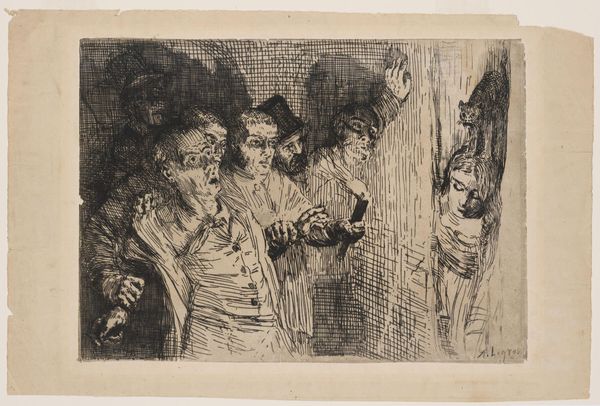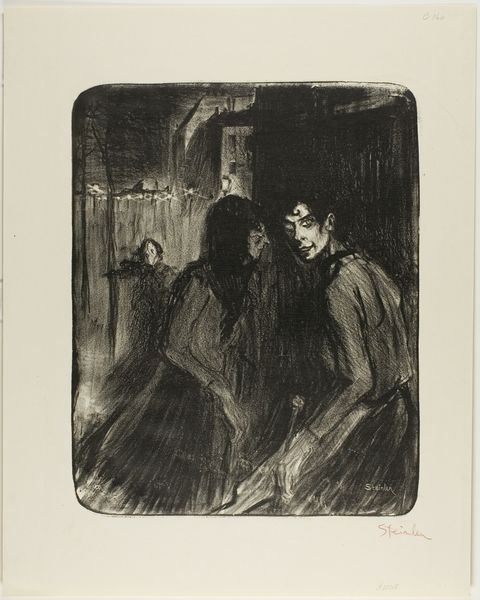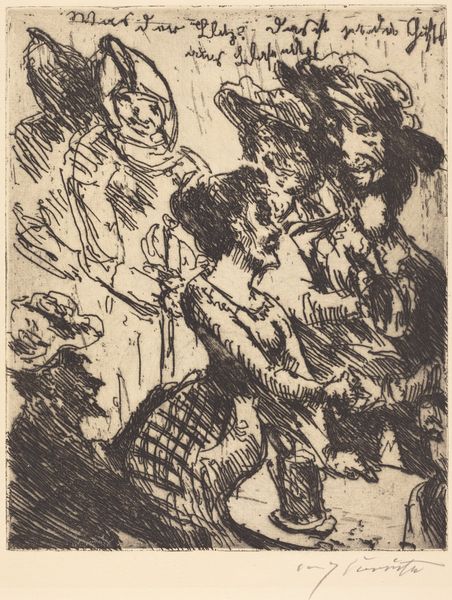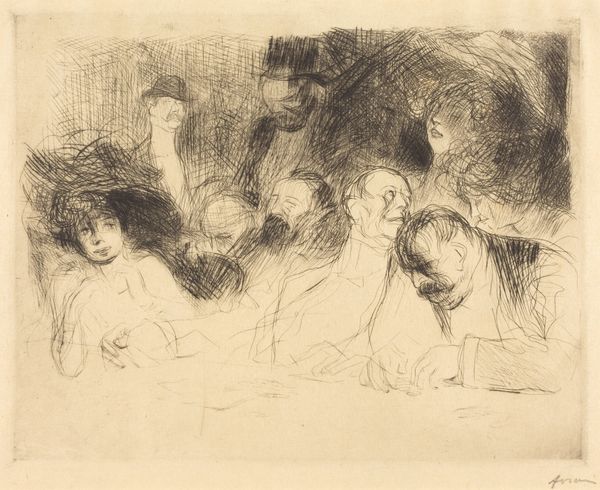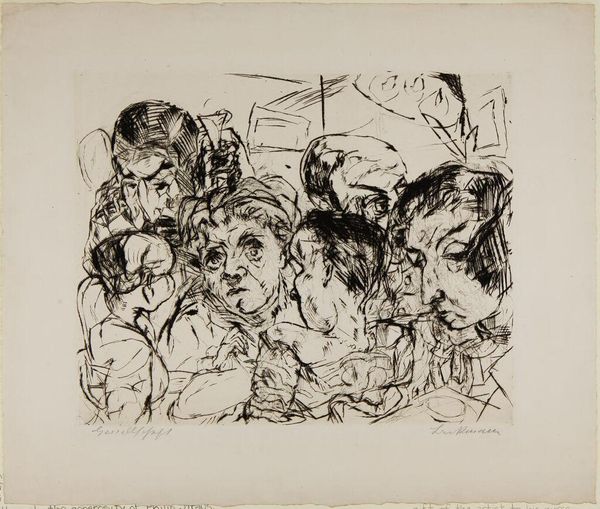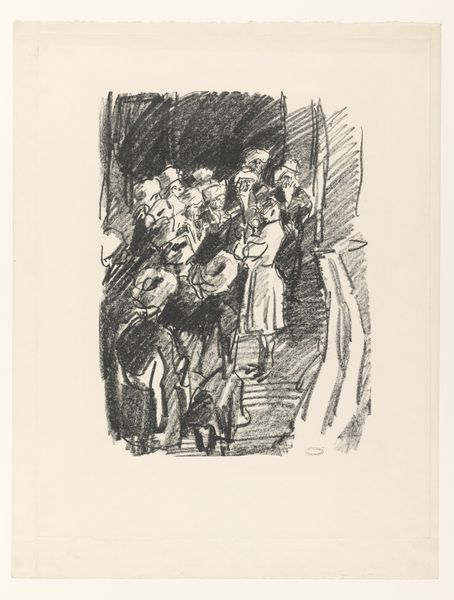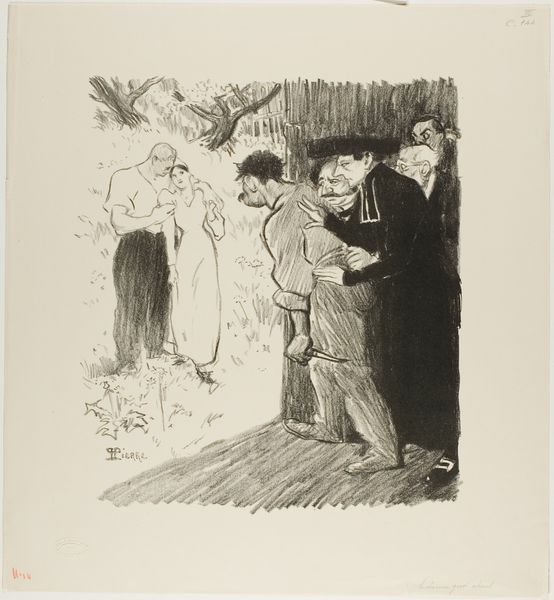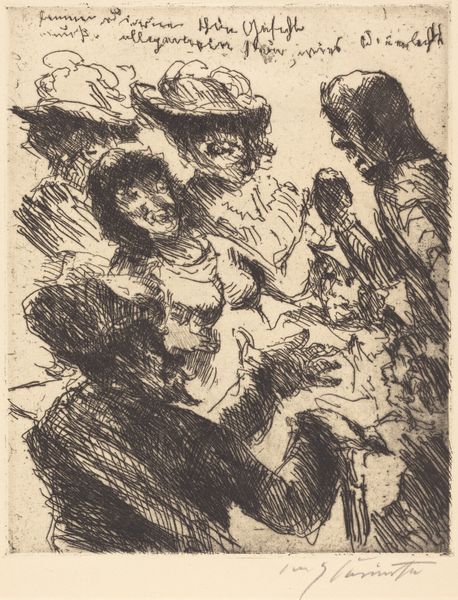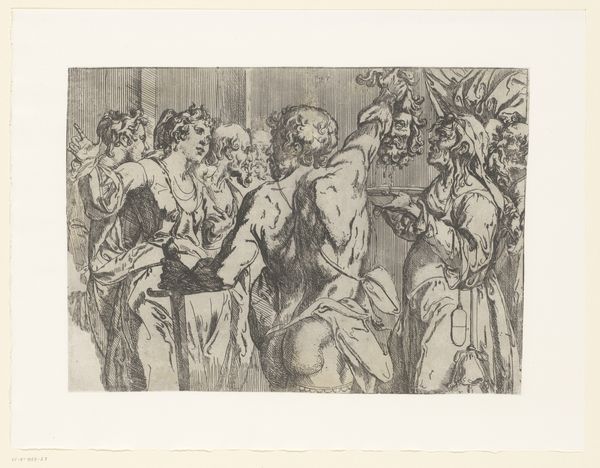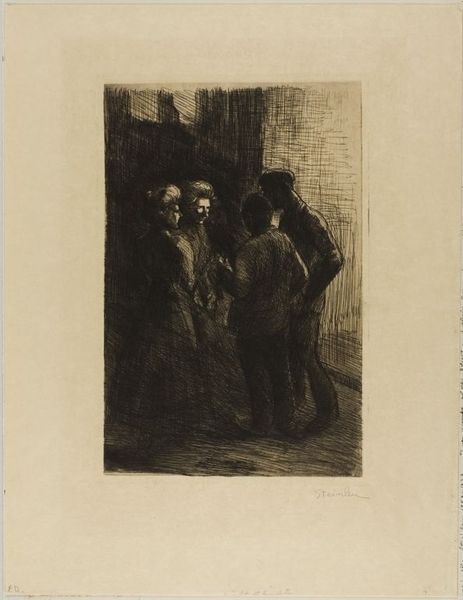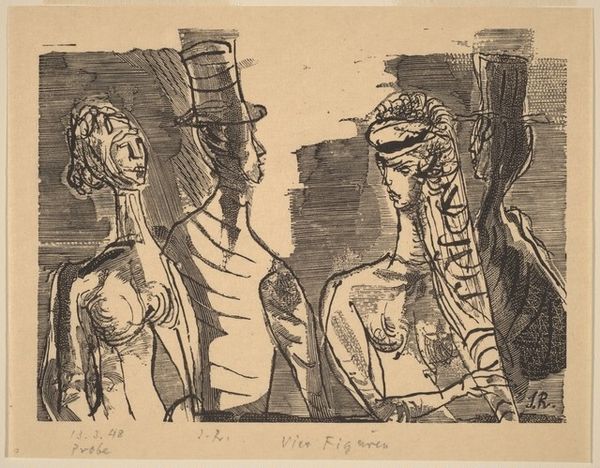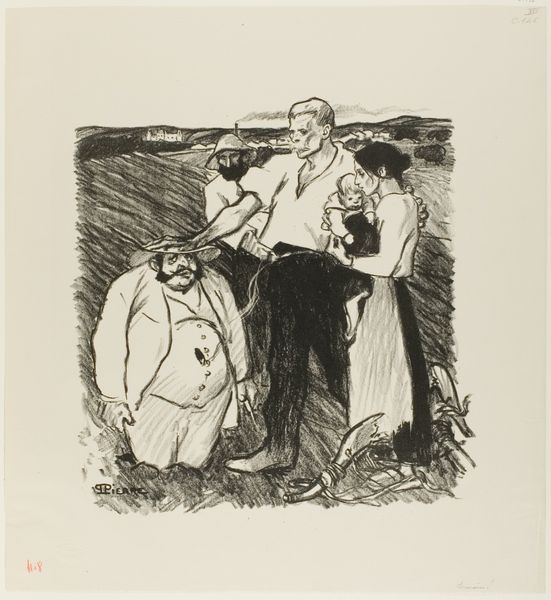
Dimensions: 274 × 371 mm (plate); 359 × 526 mm (sheet)
Copyright: Public Domain
Editor: Alphonse Legros’ 1862 etching, "The Black Cat," currently at the Art Institute of Chicago, is so evocative! The scene feels…theatrical, with its dramatic expressions. What's your interpretation of this work? Curator: For me, the power of "The Black Cat" lies in understanding the historical and social context of 19th-century anxieties. This era saw rising urbanization, class divisions, and societal disruption. Doesn't the frenzied reaction of the crowd suggest a communal fear of the unknown, or perhaps, a fear of what they deem "other"? What societal dynamics do you think this print might be mirroring? Editor: That's fascinating! I hadn't thought of it that way. I was mostly focused on the apparent terror on their faces and the dark, almost gothic, atmosphere. Your perspective frames it within broader power structures and societal unease, like a critique of the establishment’s anxieties? Curator: Precisely! Consider how gender and superstition also play roles. The “black cat” motif could symbolize the feminine “other”, historically demonized and scapegoated. Is it not the woman on the right, separate from the group of men on the left, who seems to be the main focus of attention? Do you agree with this framing, and what could it imply about the society of Legros' time? Editor: Now I see how loaded the image is with socio-political meaning! It's not just about jump scares; it speaks to a deeper cultural narrative. It’s definitely given me a new appreciation for how artworks can engage with the anxieties of their time. Curator: Absolutely, and that's why understanding these broader narratives is key to appreciating any work of art! I find something new every time I see this one, how about you? Editor: I agree. It's like opening up layers of meaning that you couldn’t have known were there before.
Comments
No comments
Be the first to comment and join the conversation on the ultimate creative platform.
